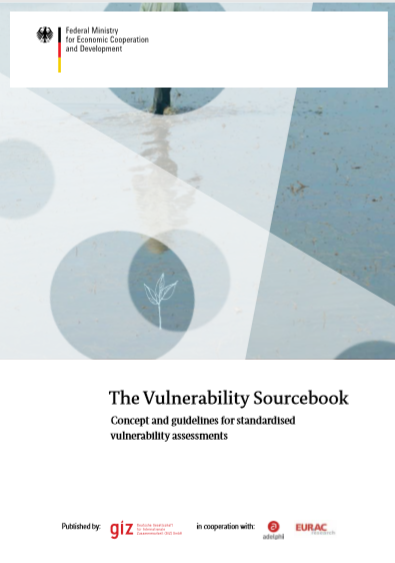The Vulnerability Sourcebook: Concept and guidelines for standardised vulnerability assessments

In recent years, vulnerability assessments (VAs) have increasingly been used to identify climate change impact hotspots and to provide input for adaptation and development planning at local, national and regional levels. Vulnerability assessments assumed particular significance in the context of the National Adaptation Plan (NAP) process. This process was established in 2010 as part of the Cancun Adaptation Framework to complement existing short-term national adaptation programmes of action (NAPAs). It aims at reducing the vulnerability of developing countries, especially the least developed countries (LDCs) and the most vulnerable groups, by addressing medium- and long-term adaptation needs. Consequently, assessment of climate change vulnerabilities at different levels is an integral part of NAP implementation, as emphasised by the Technical Guidelines for the National Adaptation Plan Process (LEG 2012).
However, with so many varying definitions of vulnerability and related terms, and the variety of methodologies aiming to address them (see e.g. UNFCCC 2010b), there has been no dedicated conceptual approach for assessing vulnerability in the context of development cooperation. Moreover, vulnerability assessments have largely been confined to a supporting role in adaptation planning. But there is also a demand for compelling methods which assess adaptation efforts and incorporate lessons from adaptation experience, and so vulnerability assessments have assumed a new role in monitoring and evaluation (M&E) of adaptation.
- Publisher: GIZ- The Deutsche Gesellschaft für Internationale Zusammenarbeit GmbH Download

